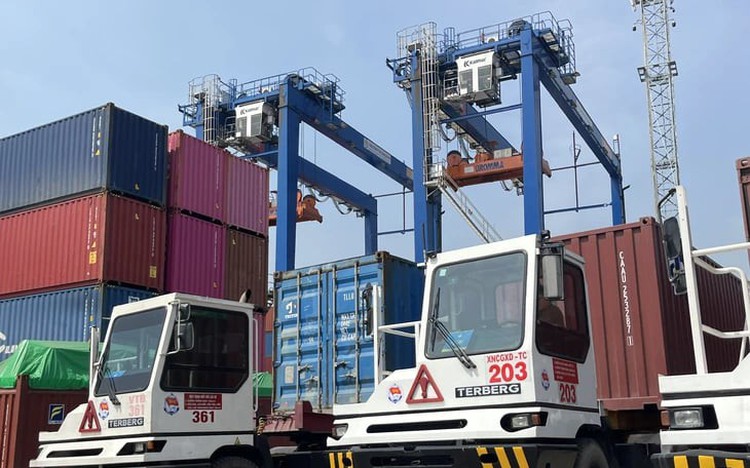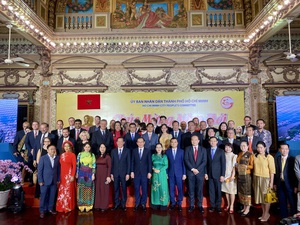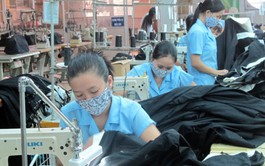
Containerized goods under export procedures at Cat Lai Port in Ho Chi Minh City. Photo: N.B. / Tuoi Tre
The targets are outlined in the draft political report for the Ho Chi Minh City Party Congress for the 2025–30 term, scheduled to open on Monday and run through Wednesday.
At a press briefing last week introducing the congress, Duong Anh Duc, head of the Propaganda and Mass Mobilization Commission under the municipal Party Committee, said the city’s per capita GRDP in 2025 is estimated at VND220 million ($8,350), 1.7 times the national average, according to Thanh Nien (Young People) newspaper.
Building on this achievement, the city plans to maintain an average GRDP growth rate of 10–11 percent annually between 2025 and 2030, pushing per capita GRDP to $14,000–15,000 by 2030.
This figure is 1.65–1.8 times higher than the national per capita GDP target of $8,500 set for the same year.
Duc emphasized that the plan reaffirms the city’s role as Vietnam’s economic locomotive and a major regional hub for finance, science, technology, and innovation.
Social spending on research and development is projected to account for 2–3 percent of GRDP annually during the 2025–30 period, while 4–5 percent of the city’s annual budget will be allocated to science, technology, and digital transformation.
Average social investment is expected to reach 35–40 percent of GRDP, with the digital economy contributing 30–40 percent and labor productivity increasing around eight percent per year.
The city’s budget revenue in 2025 is estimated at VND737 trillion ($28 billion), representing 36.7 percent of the national revenue.
These resources will fund infrastructure development, social welfare programs, and key urban projects.
In the next five years, Ho Chi Minh City will focus on building a ‘livable city,’ ensuring that every resident has access to opportunities for growth and comprehensive support in healthcare, education, and living conditions, Duc said.
Starting in 2026, residents will be entitled to at least one free annual health check or screening, supported by an electronic health record system connecting all medical facilities to enhance monitoring and care.
By 2030, the city aims to reach an average of 35.1 hospital beds, 21 doctors, and 35 nurses per 10,000 people, approaching standards in developed regional cities.
The municipal government will also roll out an aging population adaptation strategy, expanding comprehensive healthcare and advisory services for the elderly across the city.
In education and training, the city targets major improvements by 2030, including an average of 300 classrooms per 10,000 residents to reduce overcrowding.
It also aims to eradicate poverty, make English the second language in schools, and expand bilingual and integrated learning models connecting general, vocational, and higher education.
The city seeks to achieve regional-level education standards and build a globally competitive workforce, with education, healthcare, culture, and science and technology identified as the four pillars of its development strategy.
Looking ahead to 2045, Duc said Ho Chi Minh City aims to be among the world’s top 100 cities, offering a high quality of life, a dynamic development environment, and a highly skilled workforce.




Max: 1500 characters
There are no comments yet. Be the first to comment.